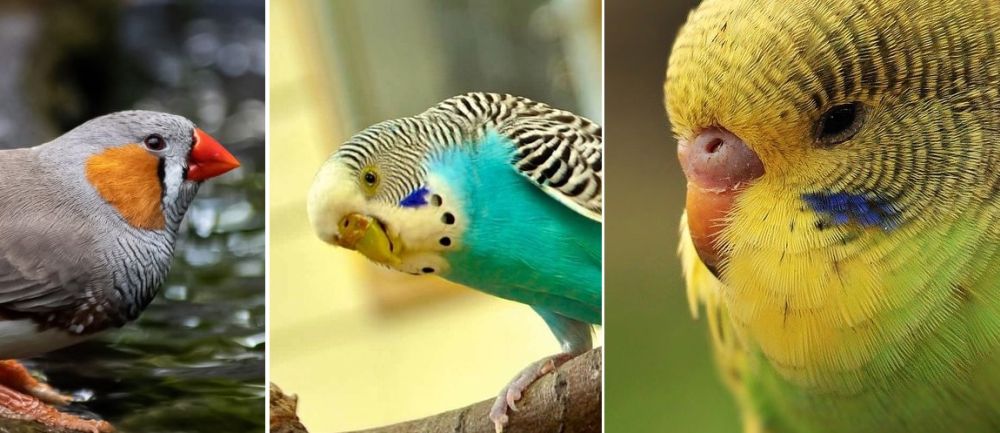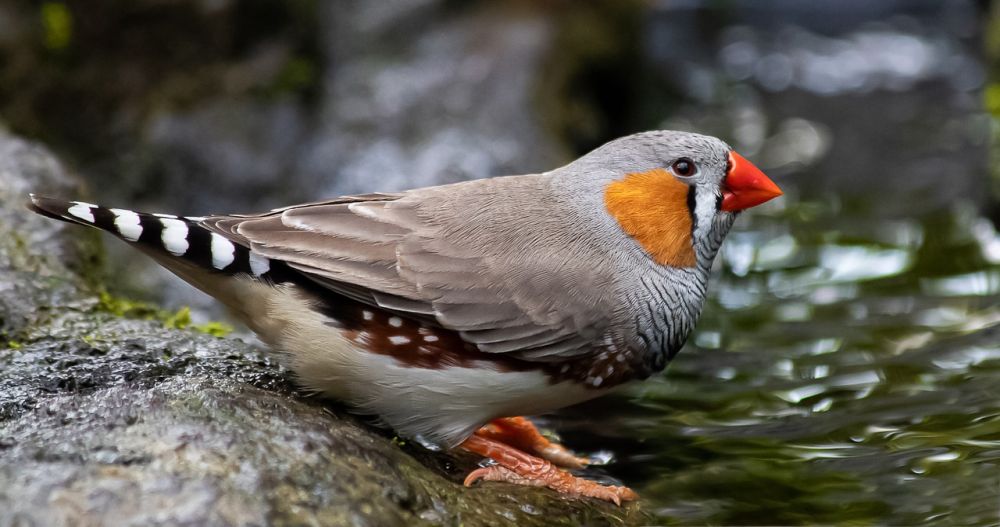Many families assume pet birds are great for kids because they’re easier than a cat or dog, but that’s not always the case. All pets require a lot of time, money, and responsibility. So, while birds can make great pets for a responsible child, they’re not so great if your family isn’t dedicated to caring for them. Luckily, some birds are much easier to care for than others, and they can be a great starting pet for you and your family. Which birds should you consider for your animal-loving child?

What Makes a Bird Great for Kids?
Caring for a pet is a big commitment, and most kids can’t do it alone. Unless your child is 12 years or older, they will probably need your help caring for their bird. So, only consider getting a pet if you’re willing to help your child out. If they seem truly prepared to care for a bird, then there are some ways to find the best pet for them. Here are two things to consider.
They’re Easy to Care for
When getting any pet for a kid, you’ll want to ensure that animal is easy to care for. All pets can be hard work, but certain birds have simpler care requirements than others. Easier birds are usually smaller, more affordable, and have a shorter lifespan. Their necessary food and supplies should be easily accessible at pet supply stores near you. Some kids have been successful caring for larger, more demanding birds, but that’s only a good idea if your family has experience caring for unique pets.
Your Kid is Dedicated
Of course, choosing the perfect bird isn’t just about that bird’s breed, but it’s also about your kid’s interest. Your kid needs to be dedicated to the bird you bring home, so once you settle on a type of bird, make sure your kid does plenty of research on how to care for them. Some kids might even find joy in making creative crafts like bird feeders for their new pet. If your child isn’t enthusiastic about getting a bird, then it’s better to wait until they show more responsibility.
Best Pet Birds for Kids
If you’re new to bird keeping, you might be unsure which birds are best for beginners. Luckily, there are plenty of breeds that are suitable for even young pet parents. Here are six types of pet birds that are great for kids.
#1 – Finches

Finches are excellent pet birds for kids because they’re small and require minimal interactions. However, they are social birds, so it’s a good idea to have more than one finch so they can keep each other company. Buying pairs of the same sex is the best way to prevent baby birds from appearing. These birds live around 7 years, and they’re known for soothing humans with their soft chirps and chatter. Despite popular belief, they thrive best on a fresh greens diet rather than only seeds.
These little birds are also less active than other birds. They’re content chatting with each other in their enclosure rather than flying around freely. They’re not fond of being handled by humans, but they rarely bite. In most cases, they’d rather spend time with other finches than with humans. They need an enclosure that’s large enough for them to fly around and have space from each other if needed. They also love having a variety of perches and plastic toys to interact with.
#2 – Canaries

Like finches, canaries are small birds that love to sing. Yet, they’re quieter and more reserved, causing them to be more nervous around humans. Males are more likely to sing frequently than females. They are not as social as finches, so they are content being kept alone as long as they still have enough space to fly around and explore. They don’t require much attention, which is what makes them so great for children. Also, these birds can live up to 10 years, so they will be a long-term commitment for your family.
Canaries love to keep busy with toys, so make sure they have plenty of swings and hanging toys spread out around their enclosure without interfering with their flying space. They do not like to be handled, but they love to fly. So, they might want to come out of their enclosure to fly around now and then. Canaries are an exciting pet to watch, but they’re not affectionate like many children would hope. These little birds are also extra sensitive to air quality, so they shouldn’t be kept in a home with a smoker.
#3 – Budgies/Parakeets

Parakeets are very social toward both humans and birds. They’re known for mimicking sounds like a parrot, and they can even learn up to 100 different sounds. These happy birds are content either living by themselves or with another parakeet. If they live alone, then your kid will just have to spend extra time interacting with them each day. Parakeets love when their humans sing to them, and sometimes, they’ll even sing back! Most parakeets only live for about 5 to 10 years.
Unlike finches and canaries, parakeets love to be near humans has much as possible. So, keep their enclosure in the room you hang out in most. When sleeping, parakeets feel more comfortable if they have a cover over their enclosure. These little birds also love space during the day, so it’s recommended that you let them out of their cage at least once a day to fly freely. Parakeets can become comfortable being held by their humans, and it’s even common to feed them in your hand. They love eating a variety of seed mixes, fruits, and vegetables.
#4 – Cockatiels

Cockatiels are a bit larger than all the above birds, but they’re still a fun-loving bird that kids can bond with. They require a bit more patience and commitment, so they’re more suitable for older kids. They need more time out of their enclosures than smaller birds do, so letting them out of their cage should be a part of their daily routine. Even so, the enclosure itself should still be plenty big for your bird to fly around. Cockatiels can enjoy being held and stroked, but only if you’re very gentle. Young children can often be too overwhelming for these birds. Most cockatiels live 10 to 14 years, so they’re also a longer commitment too.
Like parakeets, cockatiels can learn to mimic sounds and perform cute tricks. The more time your child spends around your cockatiel, the more they will trust them. Cockatiels learn best when given rewards, similarly to how you would train a dog. Despite their friendly nature, these birds have no problem putting a smothering human in their place. They might whistle or ruffle their feathers to show that they’re annoyed.
#5 – Lovebirds

As the name implies, lovebirds are charming birds with a lovable personality. They’re another more advanced breed that’s best for older children. While lovebirds are most commonly seen in pairs, it’s possible to keep lovebirds by themselves without sacrificing their happiness. If you choose to have two lovebirds, keep them separated at first so they can learn to bond with you before bonding with each other. All lovebirds could show signs of aggression if provoked, but male lovebirds are usually calmer. Hand-feeding and talking to a lovebird are the easiest ways to get them to bond with their humans.
Lovebirds can learn to talk and perform other tricks, but only if they receive treats afterwards. They’re very active and playful, so they need a large enclosure with plenty of toys and perches. They enjoy riding on their human’s shoulders, so that can be another great way to get them to trust your child. These birds love being in a room with lots of light, but you should be sure to cover their cage at night so they get plenty of sleep. They usually live for 10 to 15 years, so they’re a longer commitment just like a cockatiel.
#6 – Lorikeets

Finally, lorikeets are another excellent breed of pet birds for children, but like cockatiels and lovebirds, they’re more suitable for older kids. They’re intelligent and energetic, so they need lots of space with lots of toys to keep their minds busy. Hand-feeding a lorikeet is a great way to help them get used to you. But once your kid bonds with your bird, the bird might become clingy. If you don’t spend enough time with a lorikeet each day, they could shriek for attention. They also need about three hours out of their cage daily, so they’re a more time-consuming bird.
Lorikeets only live about 7 to 9 years. But that time is well-spent because lorikeets love to be pet and held. They also love when humans just sit and talk to them. However, they’re a rather mischievous bird because they can sometimes learn to open their cage on their own. They’re also messier than similar breeds, so they’ll require more cleaning. Additionally, their feeding requirements are more unique as well since they thrive best on nectar, pollen, insects, fruits, and berries.
Are Pet Birds a Good Choice for Your Kids?
Some kids might be fully prepared to take on a new pet while others might not be qualified enough. Nearly every child will be asking for an animal at some point, but don’t give in until you’re certain they’re ready for it.
Here are some things to consider before buying a pet bird:
- Your kid shouldn’t be the sole caretaker of the bird unless they’re 12 years or older.
- Your kid needs to have enough free time to care for the bird. Most birds need an hour or two of attention a day.
- Your child should be willing to do plenty of research on the bird’s care before bringing them home.
- You’ll need to have enough money to spend in case the bird gets sick. Encouraging your kid to save up money for this is a great idea.
- Your child needs to understand that animals don’t like to be smothered with attention. Make sure they know when to give birds space.
If any of the above aren’t true for your household, you might want to reconsider getting a bird. Only get a bird if you know your child is committed to caring for them. Pets can be a great way to teach responsibility, but don’t let a lesson get in the way of an animal’s life. If at any point your kid isn’t caring for their pet as they should, you’ll need to care for them yourself or find them a new home. Always keep the animal’s best interest in mind.
Pet birds for kids can be great additions to the family as long as you properly prepare for them. Birds are not meant to be kept in a tiny cage in the corner of a spare room, but instead, they should get lots of space, love, and things to look at. Just because caring for a bird is simpler than caring for a dog doesn’t mean they’re easy. All animals take lots of hard work, so keep that in mind when choosing a pet for your children.
